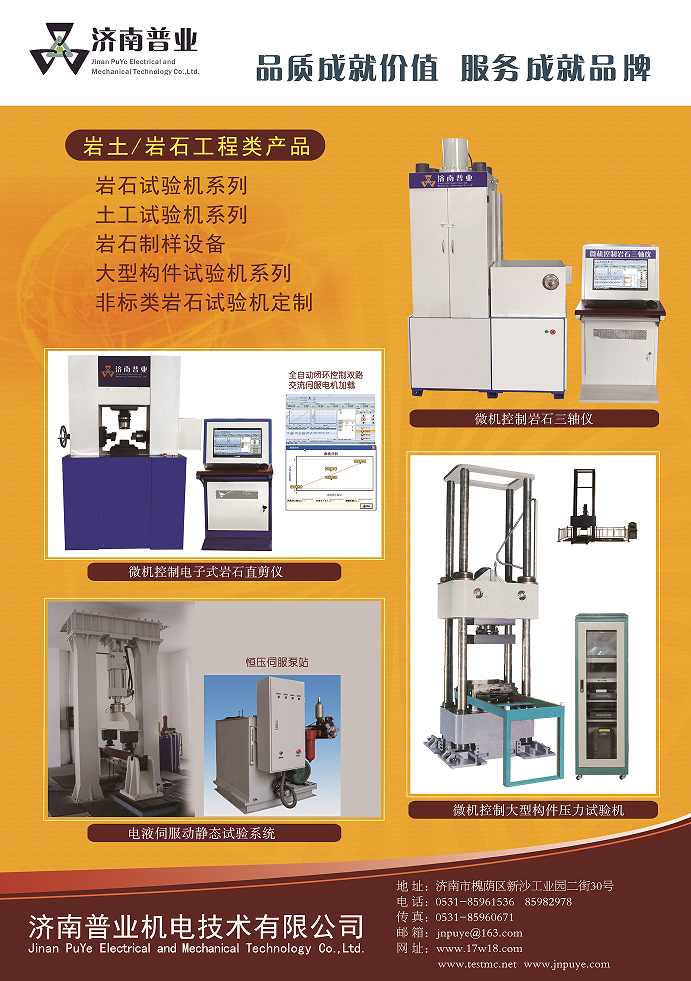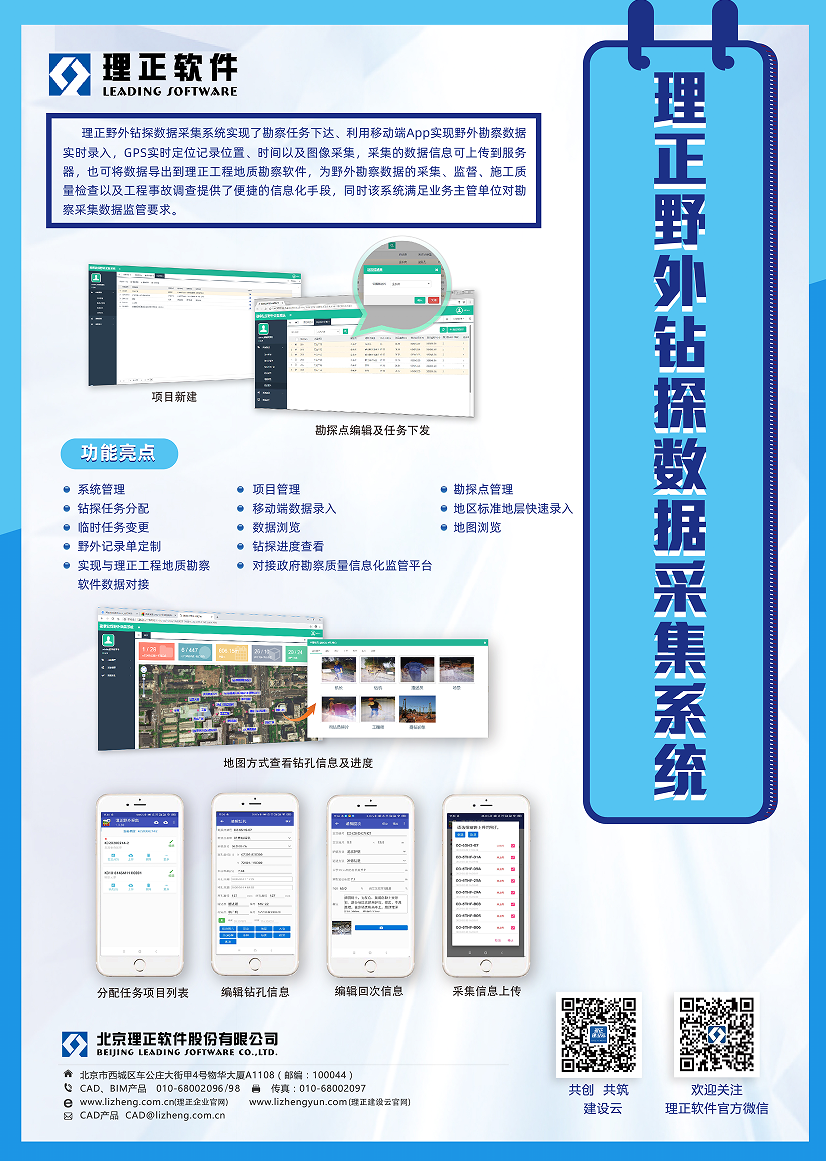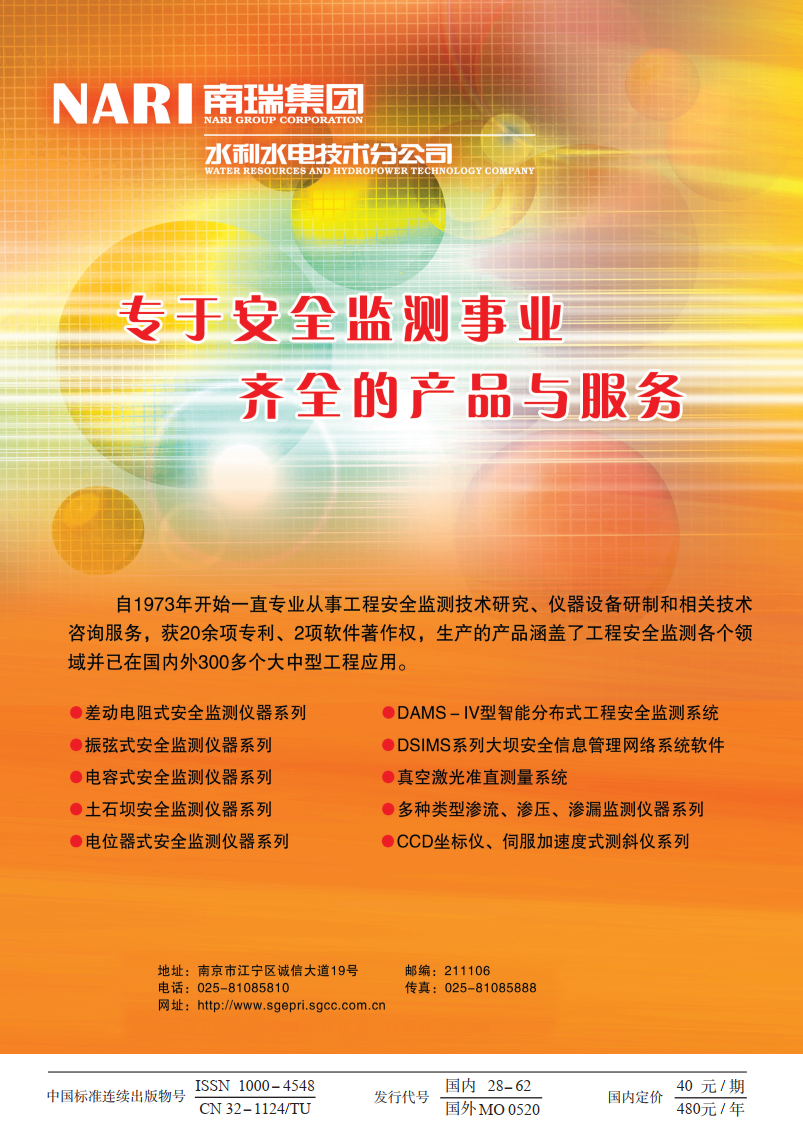| [1] |
ZHOU Y G, CHEN Y M, LING D S. Shear wave velocity-based liquefaction evaluation in the great Wenchuan Earthquake: a preliminary case study[J]. Earthquake Engineering and Engineering Vibration, 2009, 8(2): 231-239.
|
| [2] |
袁晓铭, 曹振中. 砂砾土液化判别的基本方法及计算公式[J]. 岩土工程学报. 2011, 33(4): 509-519. (YUAN Xiao-ming, CAO Zhen-zhong. Fundamental method and formula for evaluation of liquefaction of gravel soil[J]. Chinese Journal of Geotechnical Engineering, 2011, 33(4): 509-519. (in Chinese))
|
| [3] |
孙 锐, 唐福辉, 袁晓铭. 频率下降率法对2011年新西兰6.3级地震液化的盲测[J]. 岩土力学, 2011, 32(增刊2): 383-388. (SUN Rui, TANG Fu-hui, YUAN Xiao-ming. Blind detection of liquefaction sites by the method of frequency decrease rate for New Zealand Earthquake[J]. Rock and Soil Mechanics, 2011, 32(S2): 383-388. (in Chinese))
|
| [4] |
BHATTACHARYA S, HYODO M, GODA K, et al. Liquefaction of soil in the Tokyo Bay Area from the 2011 Tohoku (Japan) Earthquake[J]. Soil Dynamics and Earthquake Engineering, 2011, 31(11): 1618-1628.
|
| [5] |
COX B R, BOULANGER R W, TOKIMATSU K, et al. Liquefaction at strong motion stations and in Urayasu City during the 2011 Tohoku-Oki Earthquake[J]. Earthquake Spectra, 2013, 29(S1): 55-80.
|
| [6] |
王志华, 周恩全, 徐 超. 土体液化大变形研究进展与讨论[J]. 南京工业大学学报(自然科学版), 2012, 34(5): 143-148. (WANG Zhi-hua, ZHOU En-quan, XU Chao. Advance and discussion on liquefaction-induced large deformation of soil[J]. Journal of Nanjing University of Technology (Natural Science), 2012, 34(5): 143-148. (in Chinese))
|
| [7] |
高玉峰, 刘汉龙, 朱 伟. 地震液化引起的地面大位移研究进展[J]. 岩土力学, 2000, 21(3): 294-298. (GAO Yu-feng, LIU Han-long, ZHU Wei. Advances in large ground displacement induced by seismic liquefaction[J]. Rock and Soil Mechanics, 2000, 21(3): 294-298. (in Chinese))
|
| [8] |
ISHIHARA K, YOSHIMINE M. Evaluation of settlements in sand deposits following liquefaction during earthquakes[J]. Soils and Foundations, 1992, 32(1): 173-188.
|
| [9] |
叶 斌, 叶冠林, 长屋淳一. 砂土地基地震液化沉降的两种简易计算方法的对比分析[J]. 岩土工程学报, 2010, 32(增刊2): 33-36. (YE Bin, YE Guan-lin, NAGAYA Junichi. Comparison of two simple methods for assessing subsidence of sandy ground caused by liquefaction in earthquake[J]. Chinese Journal of Geotechnical Engineering, 2010, 32(S2): 33-36. (in Chinese))
|
| [10] |
张建民, 王 刚. 砂土液化后大变形的机理[J]. 岩土工程学报, 2006, 28(7): 835-840. (ZHANG Jian-min, WANG Gang. Mechanism of large post-liquefaction deformation in saturated sand[J]. Chinese Journal of Geotechnical Engineering, 2006, 28(7): 835-840. (in Chinese))
|
| [11] |
SHAMOTO Y, ZHANG J M. Evaluation of seismic settlement potential of saturated sandy ground based on concept of relative compression[J]. Soils and Foundations, 1998, 38(S2): 57-68.
|
| [12] |
刘汉龙, 周云东, 高玉峰. 砂土地震液化后大变形特性试验研究[J]. 岩土工程学报, 2002, 24(2): 142-146. (LIU Han-long, ZHOU Yun-dong, GAO Yu-feng. Study on the behavior of large ground displacement of sand due to seismic liquefaction[J]. Chinese Journal of Geotechnical Engineering, 2002, 24(2): 142-146. (in Chinese))
|
| [13] |
庄海洋, 陈国兴. 砂土液化大变形本构模型及在ABAQUS软件上的实现[J]. 世界地震工程, 2011, 27(2): 45-50. (ZHUANG Hai-yang, CHEN Guo-xing. Constitutive model for large liquefaction deformation of sand and its implementation in ABAQUS software[J]. Word Earthquake Engineering, 2011, 27(2): 45-50. (in Chinese))
|
| [14] |
ISHIHARA K, ARAKI K, BRADLEY B A. Characteristics of liquefaction induced damage in the 2011 great east Japan Earthquake[C]// International Conference on Geotechnics for Sustainable Development. Hanoi, 2011: 1-22.
|
| [15] |
UENG T S, WU C W, CHENG H W, et al. Settlements of saturated clean sand deposits in shaking table tests[J]. Soil Dynamics and Earthquake Engineering, 2010, 30(1/2): 50-60.
|
| [16] |
HIGUCHI S, EJIRI J. Influence of the earthquake motion characteristics on the ground settlement behavior due to liquefaction[C]// Proceedings of the International Symposium on Engineering Lessons Learned from the 2011 Great East Japan Earthquake. Tokyo, 2012: 789-800.
|
| [17] |
ADALIER K, ELGAMAL A. Liquefaction of over-consolidated sand: a centrifuge investigation[J]. Journal of Earthquake Engineering, 2005, 9(S1): 127-150.
|
| [18] |
DASHTI S, BRAY J D, PESTANA J M, et al. Mechanisms of seismically induced settlement of buildings with shallow foundations on liquefiable soil[J]. Journal of Geotechnical and Geoenvironmental Engineering, ASCE, 2010, 136(1): 151-164.
|
| [19] |
SENTO N, KAZAMA M, UZUOKA R, et al. Liquefaction-induced volumetric change during re- consolidation of sandy soil subjected to undrained cyclic loading histories[C]// Proceedings of the International Conference on Cyclic Behaviour of Soils and Liquefaction Phenomena. Bochum, 2004: 199-206.
|
| [20] |
汪闻韶. 剪切波速在评估地基饱和砂层地震液化可能性中的应用[J]. 岩土工程学报,2001, 23(6): 655-658. (WANG Wen-shao. Utilization of shear wave velocity in assessment of liquefaction potential of saturated sand under level ground during earthquakes[J]. Chinese Journal of Geotechnical Engineering, 2001, 23(6): 655-658. (in Chinese))
|
| [21] |
黄 博, 丁 浩, 陈云敏. 高速列车荷载作用的动三轴试验模拟[J]. 岩土工程学报, 2011, 33(2): 195-202. (HUANG Bo, DING Hao, CHEN Yun-min. Simulation of high-speed train load by dynamic triaxial tests[J]. Chinese Journal of Geotechnical Engineering, 2011, 33(2): 195-202. (in Chinese))
|
| [22] |
PESTANA J M, WHITTLE A J. Compression model for cohesionless soils[J]. Géotechnique, 1995, 45(4): 611-631.
|
| [23] |
赵颜辉, 朱俊高, 张宗亮, 等. 无黏性土压缩曲线的一种数学模式[J]. 岩土力学, 2011, 32(10): 3033-3037. (ZHAO Yan-hui, ZHU Jun-gao, ZHANG Zong-liang, et al. A compression model for cohesionless soils[J]. Rock and Soil Mechanics, 2011, 32(10): 3033-3037. (in Chinese))
|
| [24] |
姚仰平, 余亚妮. 基于统一硬化参数的砂土临界状态本构模型[J]. 岩土工程学报, 2011, 33(12): 1827-1832. (YAO Yang-ping, YU Ya-ni. Extended critical state constitutive model for sand based on unified hardening parameter[J]. Chinese Journal of Geotechnical Engineering, 2011, 33(12): 1827-1832. (in Chinese))
|
| [25] |
周燕国, 梁 甜, 李永刚, 等. 含黏粒砂土场地液化离心机振动台试验研究[J]. 岩土工程学报, 2013, 35(9): 1650-1658. (ZHOU Yan-guo, LIANG Tian, LI Yong-gang, et al. Dynamic centrifuge test of liquefaction of clayey sand ground[J], Chinese Journal of Geotechnical Engineering, 2013, 35(9): 1650-1658. (in Chinese))
|
| [26] |
ISHIKAWA A, SHAMOTO Y, MANO H, et al. Effect of liquefaction duration on progressive failure of sandy ground under 2-D biased load of structure[C]// The 8th International Conference on Physical Modelling in Geotechnics. Perth, 2014: 1079-1085.
|
| [27] |
MALVICK E, KUTTER B, BOULANGER R, et al. Shear localization due to liquefaction-induced void redistribution in a layered infinite slope[J]. Journal of Geotechnical and Geoenvironmental Engineering, ASCE, 2006, 132(10): 1293-1303.
|
 百度学术
百度学术
 百度学术
百度学术
 百度学术
百度学术
 本站查看
本站查看
 百度学术
百度学术
 百度学术
百度学术
 百度学术
百度学术
 百度学术
百度学术
 百度学术
百度学术
 百度学术
百度学术
 百度学术
百度学术
 百度学术
百度学术
 百度学术
百度学术
 百度学术
百度学术
 百度学术
百度学术
 百度学术
百度学术
 百度学术
百度学术








 下载:
下载:
